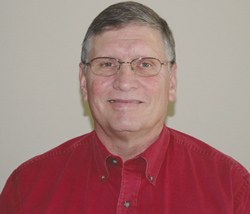Trails to the Future! (Opinion)
by February 4, 2013 12:00 am 61 views

The continuing development and expansion of the Razorback Greenway and the Heritage Trail System is increasing the value of the entire real estate market.
Livability indexes show our region rising in the ranks, with the artsy crowd headed here for the Crystal Bridges Museum of American Art. As our weekend and holiday trade increases, the room nights and restaurant seats fill up all week instead of just four nights a week.
Tourism not only creates jobs, but also attracts retirees to our region as permanent residents. Walkability matters to the seniors, because we become fitness conscious shortly after we get grandchildren and are reminded of our mortality.
New urbanist development themes for such projects as Ruskin Heights in Fayetteville and the Applegate project in Bentonville were starting to emerge before the real estate crash of 2007-08. Well-designed, high-density, mixed-use projects require considerable capital, and may have been painted with the “boomtown” brush, but evidence from such markets as Conway indicates that new urbanist lifestyle developments can work in Arkansas.
The Village at Hendrix is being viewed by Hendrix College and the city of Conway as a successful venture. Affordable housing choices and a mix of commercial and office uses integrated into the plan make these types of developments a “new” version of the traditional downtowns that spontaneously developed as pedestrian-friendly places a century ago.
Walk-up apartments above small retail shops are now a hot commodity in downtown Rogers, Bentonville and Fayetteville. Simulation of this concept on a greenfield site is the essence of the new urbanism movement.
Sustainability is now accepted as the right way to view our development efforts in business, home life, education and even at church. The Arkansas State Highway Commission has recognized that pedestrian-friendly developments help with orderly growth and traffic management. Its partnership with the Walton Family Foundation in funding the Razorback Greenway shows a progressive attitude.
The electorate approved the highway funding last fall that should help with our long list of road and bridge projects. We must be sure to continue to remind local elected officials to include pedestrian ways, sidewalks, public transit, trails and bikeways as essential parts of our transportation infrastructure, not just luxuries.
The costs of such investments are tiny compared to the road projects. The broad range of benefits from expanded pedestrian systems includes improved health and wellness, community pride and ultimately higher real estate values along the people-friendly corridors. Just check out the vacancy rates along the Fayetteville Trail system. Hardly a spot to rent.
The missing link for inclement weather, long distances and major event support is transit. Razorback Transit and Ozark Regional Transit are working together to improve the linkages.
It will take a continuous investment in these systems to complement our trail network and make Northwest Arkansas a truly pedestrian-friendly place to live, work, play and retire. Traffic congestion is not just a sign of progress; it can also be a sign of not enough people getting out of their cars and walking, biking or busing.
We owe a thank-you to the Walton Family Foundation, the Arkansas State Highway Commission — Dick Trammell is our local commissioner — and the Northwest Arkansas Regional Planning Commission for their leadership in trail blazing. May we all become beneficiaries of these investments, so GO TAKE A HIKE!
Craig Hull, CCIM, is president of Hull & Co. Commercial Real Estate & Consulting, and is an active regional infrastructure development member and board member for Ozark Regional Transit, the Benton County Rural Development Authority and the NWACC Foundation. He can be reached at [email protected] or 479-273-5454
